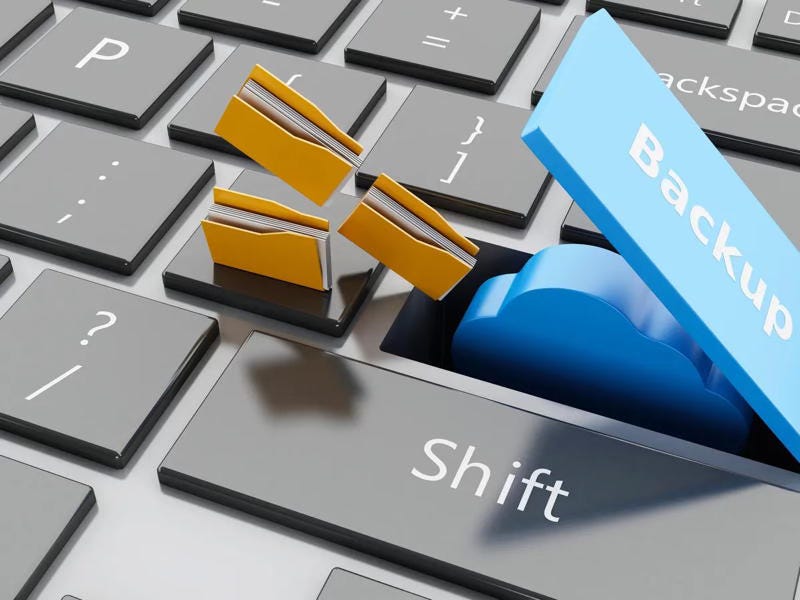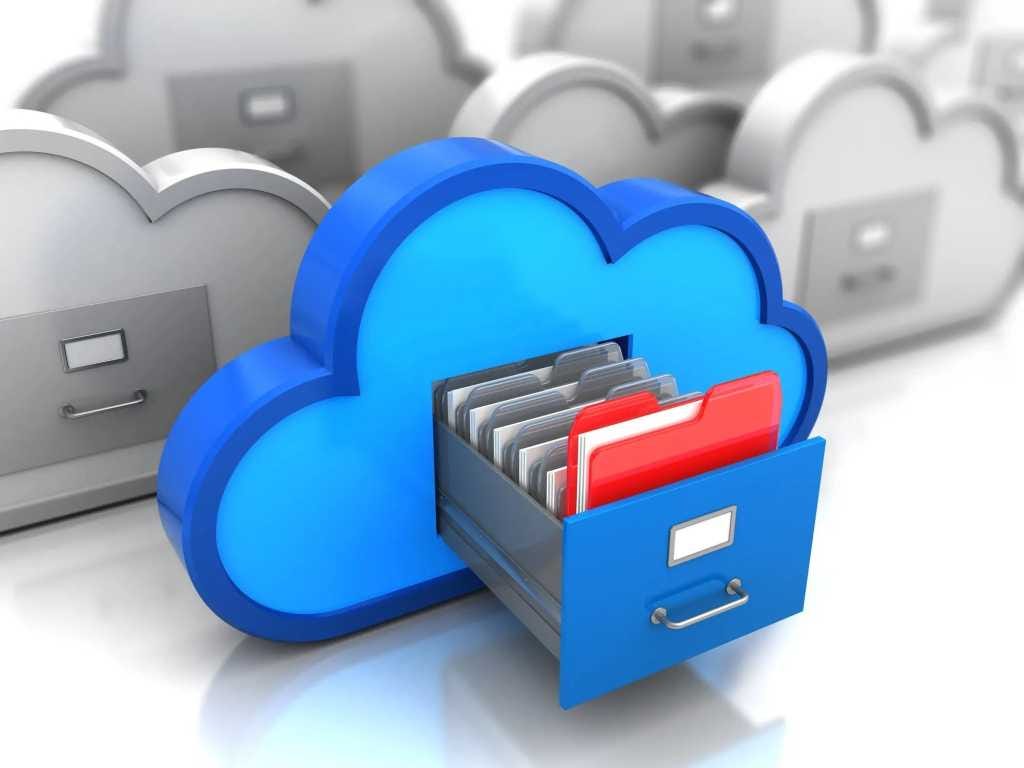To Go Forward, You Must Backup
She who laughs last backed up first!
Today’s column is thanks to a request from longtime Tech Daddy client and dear friend Chardette Jameson. She asked if I could write about backups: how they work, why they’re essential, and best practices. I said, “Absolutely! That’s a great idea, thanks!” Backups are a great topic, as most people never think about them until something catastrophic happens. Backups fall into the “ounce of prevention, pound of cure” category: they’re not sexy, just the smart and responsible thing to do.
“Be Prepared” is more than a Scout motto
As long as there have been computers (and now smartphones and tablets), there has been a need to create data backups on them. If something terrible happens to the computer, for example, a drive failure or power outage/spike, everything stored on that device could disappear. All your treasured documents, photos, music, business data — everything — gone in the blink of an eye. Computer theft is another way people can lose everything. And, increasingly, yet another cause of data loss is malware or ransomware attacks, where someone has managed to gain access to the computer and has either threatened to destroy all its files or has done so.
If you’ve ever lost an important document (or an entire project), you know the frustration and stress it can cause. However, a well-executed backup plan can transform this nightmare scenario into a minor inconvenience. The key to backups is not just creating them but also restoring them. If it’s difficult or impossible to restore what’s lost due to bad backup software design or a high learning curve, who cares how good the backup is?
This post will focus on Mac backups with a nod toward PCs; smartphones and tablets have unique and much simpler backup systems, which I’ll mention toward the end.
Down For The Count
For decades, tech experts have recommended using a three-pronged backup strategy, often called the 3-2-1 Rule.
This creates three copies of your data in different places: two on different media types and one off-site. This may have been a good idea back in the 90s, but here in 2024, it sucks, especially for us regular folks. Thankfully, there are now much easier ways to create workable backups. Let’s examine three methods that, taken together, form a solid plan.
It’s Time For Time Machine
The first and easiest kind of backup is a “local” one, where the backup resides on another external drive that you plug into your Mac or PC and then run backup software. That drive can be put in a drawer until the next backup or somewhere on your desk.
I like EaseUs To Do on the PC: it is the most straightforward backup app I’ve yet found for Windows while still doing a really good job. For Mac people, we have something PCs don’t: a Time Machine.
Many years ago, Steve Jobs realized that less than 1% of all computer users regularly backed up and tasked Apple software engineers with inventing something so brainlessly easy that all anyone had to do was turn it on and walk away: a “set it and forget it” approach. That’s how Time Machine was born.
The first time you plug a blank external drive into a Mac, a dialog will appear asking if you’d like to use it as a Time Machine backup, and that’s all you have to do. Time Machine runs in the background and now has options to back up your internal drive every hour, every day, every week, or at a custom interval. (This is a big improvement from previous versions!) If your internal drive has enough space, Time Machine will also store “local snapshots” of interim backups between the regularly scheduled ones; it will also automatically prune these local backups so they don’t take up too much drive space. Time Machine will continue to fill up the designated drive until it’s full, at which time the oldest backup will “fall off” to make way for the latest one.
To retrieve a lost or corrupted file or folder — or to get back an older version — you click on the Time Machine menu and “Enter Time Machine.” The Mac’s desktop fades away and is replaced by a series of files or folders going back in time for days, weeks or even months; you click on the version you want and then click “restore” and bada-bing! Your file is back.
If need be, you can even restore an entire drive this way. For example, when migrating from an old Mac to a new one, Apple’s Migration Assistant uses Time Machine to do just that.
Outtatime
While Time Machine is insanely easy to use, there are some downsides. The main one is that backups on the destination drive are created in a proprietary format that only Time Machine’s software understands. You can’t just double-click a file on the backup drive to see it or copy it back to the source drive. Because of this format, restoration can take minutes, hours or even days, depending on how many files are involved. Yes, Time Machine is incredibly slow in this regard. Finally, Time Machine’s locally stored data for interim backups can sometimes take up too much disk space, and the user has no control over this. As such, Time Machine is an excellent first step, but the second method is even better.
Send In The Clones
The next kind of backup also involves an external drive, but instead of Time Machine, it uses a dedicated, third-party backup app. My favorite is Mike Bombich’s invaluable Carbon Copy Cloner, which is powerful, fast, flexible and—for a one-time-only fee of $49.99 (no subscription!)—an absolute bargain.
A clone backup means that the destination drive mirrors what’s on the source drive, which means you can see the files themselves and easily copy back what you need. CCC also has its own snapshot system and a “back in time” system called Safety Net. These features allow users to quickly restore a file, folder or an entire drive in a fraction of the time Apple’s system uses. Plus, the backups themselves are lightning fast, thanks to a logging system that only backs up anything that has been added, deleted or changed since the last backup. I use CCC every day and highly recommend it. Mike Bombich has forgotten more about backups than most of us will ever remember! He even has a page on how to choose a backup drive after many years of dealing with “affordable” external drives that wound up having a high failure rate, slow speeds and the like. If you have time, also check out Mike’s blog for more insight into All Things Backups.
The nice thing about today’s larger-sized drives is that it’s now possible to create two “volumes” on a drive: one for a clone backup and the other for a Time Machine backup. Two types of backups on one device? Nice!
Cloudy With A Chance Of Backups
Finally, there is the “cloud” solution for backups, the 2024 version of an “off-site” backup. Many Mac users already use iCloud Drive, which syncs anything on the Desktop and in the Documents folder, making the files available on all Apple devices. While very handy, this is not a backup! I’ve often explained this to various people, who always seem surprised. If you delete a file on one Apple device, it’s deleted on all the others, and there is no way to retrieve it unless you have Time Machine turned on… and even then, sometimes it doesn’t work. iCloud Drive is not a backup option, but there are other cloud-based services, most notably BackBlaze.
While basic and somewhat inflexible — and slow at times — it gets the job done and has been around a long time. However, I prefer Dropbox, which combines file sync, collaboration, sharing, backups and more in one place for one fee. Depending on the plan and how you set it up, Dropbox can seamlessly backup your entire Mac or PC’s “home” folder and all its files. Dropbox also has its version of Time Machine, so you can restore a file going back in time to either six months or even a year, depending on your plan.
Phone Home
As I mentioned at the top, today’s smartphones and tablets have their own automatic backup systems that require no user intervention. Apple iPhones and iPads use iCloud Backup while Android devices use a similar Google system. As such, there’s no need to worry about backups on these devices: as long as it’s turned on and you’re on wi-fi, it happens all by itself. Let’s hope this comes to the Mac soon!
That’s a wrap!
I hope this helps you understand why backups are important and to make sure you’re doing them on a regular basis. If you need more advice or help setting up a system, you know where I am. Until then, stay safe out there and keep on backing up!
Your friendly neighborhood Tech Daddy
Tech Daddy Substack Founding Members
Leigh Adams Edgar Johnson






